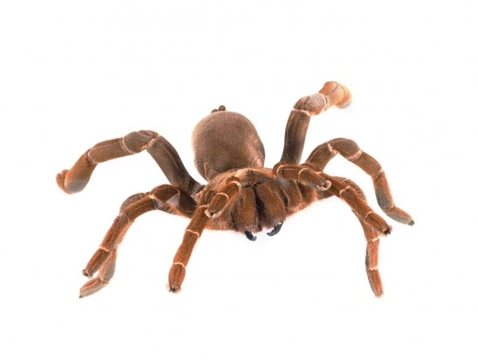
The King Baboon Tarantula: Care Tips for Experienced Keepers
The King Baboon Tarantula (Pelinobius muticus) fascinates many arachnid lovers due to its impressive size and striking appearance. However, while they may be found for sale through reputable breeders, potential keepers must understand the unique challenges involved in caring for this species. This guide explains why the King Baboon is best suited for experienced arachnid enthusiasts rather than beginners.
1. Understanding Aggression and Risk Factors
King Baboon Tarantulas are known for their defensive and aggressive behaviour. Unlike some beginner-friendly species, they may bite quickly and without warning. They possess large fangs capable of delivering a venomous bite that causes severe pain, swelling, and muscle spasms in humans. Although no fatalities have been recorded, caution and experience are essential when handling or maintaining their enclosures.
Due to their venom’s potency and quick temper, medical attention is advised after any bite. Treating a bite promptly helps minimise complications. This aggressive nature underscores their unsuitability for novice keepers.
2. Housing and Escape Prevention
Despite their size, King Baboon Tarantulas are escape artists capable of squeezing through unexpectedly small gaps and manipulating enclosure latches. Their remarkable strength means housing must be secure with a tightly fitted, lockable lid and no gaps that could allow escape.
They require a large terrestrial enclosure to accommodate their adult leg span of over nine inches. The enclosure should provide at least an 8-inch depth of well-aerated substrate to allow for burrowing, closely simulating their natural environment. Insufficient space can stress the spider, increase escape attempts, and complicate feeding.
3. Feeding Challenges and Best Practices
Feeding the King Baboon requires careful attention. Due to their large size, they consume significant amounts of live prey like crickets, mealworms, and earthworms. A common mistake is offering prey items too large—never feed anything bigger than half the size of the spider’s body to avoid injury to the spider.
Observing feeding can be difficult since these spiders often drag prey into their burrows. This behaviour can lead to uneaten prey decomposing inside, potentially causing harmful conditions. Regular enclosure maintenance is vital for health.
4. Care Requirements for Health and Comfort
Maintaining appropriate humidity (around 70%) and a suitable temperature gradient is crucial to King Baboon health. They benefit from a cyclical light environment to mimic natural day and night rhythms. These conditions, along with a deep substrate for burrowing, help prevent stress and encourage natural behaviour.
Clean, fresh water should always be available. Occasional supplementation with calcium and vitamins supports general wellbeing. Regular monitoring helps detect any health issues early.
5. Suitability and Responsible Ownership
While hardy compared to some exotic tarantulas, the King Baboon’s size and temperament make it unsuitable for beginners. Experienced keepers familiar with tarantula behaviour and safety can offer these spiders a rewarding home, appreciating their large size and unique threat displays.
Those considering this tarantula should prioritise acquiring it only from reputable breeders and be prepared for the responsibility. Understanding the species’ risks and care needs ensures ethical ownership and promotes positive arachnid keeping experiences.
6. Conclusion: Is the King Baboon Right for You?
The King Baboon Tarantula offers a fascinating pet experience for knowledgeable arachnid enthusiasts who can meet its demanding care requirements responsibly. Its aggressive nature, venom potency, and housing needs exclude it from beginner collections.
For those drawn to its impressive stature and behaviour, ensuring safe, secure housing and attentive feeding are keys to success. Always approach ownership informed and cautious, embracing the responsibility for this unique species.



